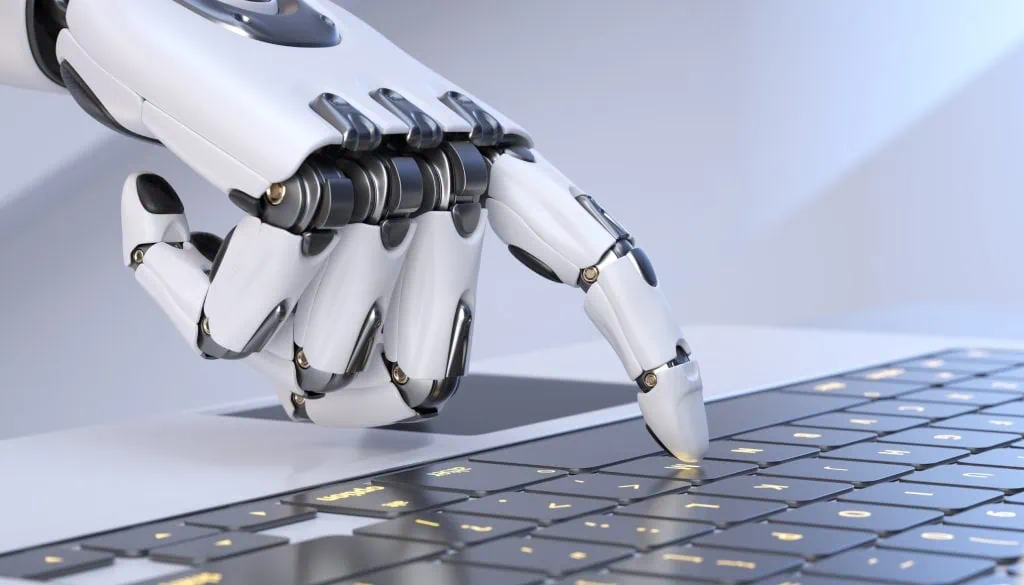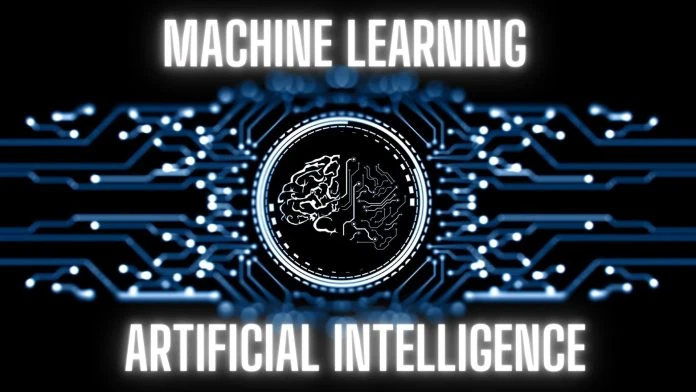Artificial Intelligence (AI) is the simulation of human intelligence processes by machines, especially computer systems. These processes include learning (acquiring information and rules for using the data), reasoning (using rules to reach approximate or definite conclusions), and self-correction. AI technologies include machine learning (where computers are trained to learn from inputs and get better over time), neural networks (which aim to simulate the human brain—allowing computers to learn from observational data), and natural language processing (or NLP, enabling the machine to understand and respond in human language).
Summary
- AI is like a big umbrella that includes Machine Learning. Both help machines solve problems but in different ways.
- AI wants machines to act like humans, while Machine Learning teaches machines to get better at tasks using data.
- Industries use both technologies to predict future trends and make data-based decisions.
- They are helpful in sectors such as healthcare for diagnosing diseases, banking for fraud detection, and many more.
What is Artificial Intelligence (AI) and Machine Learning?
As we dive deeper into today’s digital era, it’s essential to understand the concepts of Artificial Intelligence (AI) and Machine Learning. AI is a broad field of computer science that emulates human intelligence in machines, enabling them to learn, reason, and correct themselves.
On the other hand, Machine Learning is an application or subset of AI that allows systems to learn from experience without being explicitly programmed automatically. Here’s a video from IBM that explains the difference:
Definition of AI
Artificial Intelligence (AI), in simple terms, is the simulation of human intelligence processes by machines. It encompasses a range of capabilities, such as cognitive computing, neural networks, deep learning, natural language processing, and robotics.
In the 1950s, the idea of an AI has progressively transformed with technological advancements to become an overarching system that strives for self-learning mechanisms to address problems similarly to humans.
It’s essential to comprehend its diverse applications and distinctions to harness its potential across multiple domains. From pattern recognition and data analysis tools to automation systems enhancing decision-making — AI continues to redefine our world.
Definition of Machine Learning
Machine learning is a powerful facet of Artificial Intelligence. It’s an innovative approach that enables computer systems to learn from data and better their performance over time.
This advanced technology uses data analysis, pattern recognition, and predictive modeling to make machines smarter.
Machine learning involves using computational algorithms trained on extensive amounts of data. These algorithms can identify patterns within the information they are exposed to and use these insights to make accurate predictions or decisions.
For instance, supervised learning is one type of machine learning where we provide specific input-output pairs for training the algorithm.

The magic lies in how this process allows machines to improve with experience autonomously. Contrastingly, unsupervised learning functions without explicit direction, discovering hidden patterns in unlabeled datasets all by itself! Deep learning also falls under this realm; it’s an exciting subfield where artificial neural networks learn just like the human brain would!
This tech-savvy branch has revolutionized cognitive computing and natural language processing, giving rise to superior predictive models and more efficient operations across countless industries.
As a result, Machine Learning brings unparalleled dynamism to AI applications ranging from retail recommendation engines to healthcare diagnostic tools!
Similarities and Differences between AI and Machine Learning
AI and Machine Learning are integral to problem-solving and have wide-ranging applications across many industries. However, they differ in their objectives, methods of implementation, and requirements.
While AI aims for machines to mimic human behavior, Machine Learning focuses on enabling machines to learn from data and improve over time. Additionally, the methods used in AI can range from robotics to cognitive computing, while Machine Learning primarily uses algorithms for pattern recognition.
Both implementation also varies; implementing ML requires large volumes of quality data, whereas AI can be implemented without it using rule-based systems. Lastly, the computing power required differs, wherein advanced machine learning models might require more computational resources than many traditional AI systems.
Similarities in problem-solving and application
AI and machine learning share striking similarities in problem-solving and application. The predictive modeling capability of both technologies allows them to analyze extensive data sets for accurate forecasting, helping industries make informed decisions.
Both technologies have become instrumental in countless fields, such as healthcare, transforming diagnosis and treatment methods, finance, streamlining transaction processing, or in autonomous vehicles by improving safety features.
Whether it’s about intricate data analysis or the development of advanced applications – AI and machine learning consistently prove their indispensability through their shared prowess in problem-solving techniques.
Differences in objectives, methods, implementations, and requirements
AI and ML differ substantially in their objectives. AI aims to build intelligent systems that perform complex tasks with precise outcomes using learned knowledge. This approach often requires extensive rule-based algorithms, significant computational resources, and access to vast datasets.
Conversely, ML focuses on developing mathematical models that allow computers to learn without explicit programming. ML techniques make handling tasks involving pattern recognition or data analysis simpler for machines.
In contrast to AI, these systems draw from a pool of labeled training data, improving over time as they process more information. Thus, the requirements for implementing each vary considerably.
Organizations deciding between these technologies must consider their specific needs, resource availability, and desired outcomes.
How AI and Machine Learning are Used in Industries
In various industries, AI and machine learning are revolutionizing operations; for instance, manufacturers use AI to streamline production processes while healthcare entities leverage machine learning algorithms to predict patient outcomes accurately.
AI in manufacturing, banking, healthcare, and other industries
Let’s explore how various sectors are using the power of AI and machine learning:
- Manufacturers tap into AI to automate processes, predict equipment failures, and increase product quality.
- Using deep learning neural networks facilitates smarter production lines, improving efficiency.
- Banks and financial institutions leverage AI for risk analysis and fraud detection.
- Machine learning algorithms help manage customer data, predict trends, and make strategic decisions.
- AI assists doctors in diagnosing diseases more accurately through image recognition technologies.
- Machine learning models predict patient outcomes based on historical data.
- Retailers employ AI for inventory management and personalized marketing.
- Transportation companies utilize machine learning for route optimization, demand prediction, and logistic management.
- Cybersecurity firms use artificial intelligence for threat detection and response.

Machine Learning solutions for organizations
Organizations across various sectors utilize machine learning solutions to fine-tune their operations and extract value from data. Here’s how:
- Improving Data Integrity: Machine learning algorithms are employed to cleanse, harmonize, and standardize company data, enhancing its integrity.
- Drive Predictive Modeling: Organizations use machine learning to predict future trends, customer behavior, and potential risks.
- Facilitate Automated decision-making: Automated decision-making is made possible due to machine learning models that help generate data-driven insights.
- Enhancing Pattern Recognition: Neural networks based on machine learning facilitate pattern recognition for well-informed future decisions.
- Streamlining Natural Language Processing (NLP): Businesses harness the power of NLP via machine learning to analyze consumer sentiment and enhance customer service.
- Implementing Cognitive Computing: Companies employ machine learning to implement cognitive computing systems capable of mimicking human thoughts.
- Excels in Algorithm Development: Machine Learning excels in developing reliable algorithms for businesses that capture trends, patterns, or associations among numerous variables.
- Bolstering Deep Learning Initiatives: Machine learning forms the backbone of deep learning initiatives by providing structured data for complex problem-solving tasks.
Improved data input, decision-making, and operational efficiency
AI and machine learning technologies revolutionize how we handle data, make decisions, and streamline operations. Employing advanced machine learning techniques enhances data input accuracy by allowing more sources of information to be incorporated into systems.
Decision-making processes are also optimized with AI algorithms that use real-time data for better and faster results, reducing bottlenecks in organizational workflow. Increased operational efficiency is another key advantage as these technologies minimize errors, improve productivity, and facilitate seamless data integration – all contributing to an overall rise in the operational performance of companies across sectors like retail, healthcare, banking, sales, cybersecurity, customer service transportation and manufacturing.
Popular AI models
Deep learning models, part of the popular AI models, utilize artificial neural networks to solve complex tasks that go beyond traditional machine learning capabilities. Predictive analytics and cognitive computing are other prominent models businesses frequently use for forecasting future trends or processing enormous amounts of data.
Speech recognition and natural language processing (NLP) revolutionize how we interact with devices or large texts, offering a more expansive experience. Then there’s computer vision technology, facilitating comprehensive image analysis and detection processes in numerous industries. Of course, we can mention GPT-4, Bard, Claude and other NLP models. If we’re talking about generative AI, there’s DALL-E 3, MIdjourney or Stable Diffusion, just to name a few.
Robotic process automation is also popular as businesses strive to automate repetitive tasks seamlessly while improving efficiency rates. These varied types of popular AI models truly embody the versatility and adaptability of modern artificial intelligence technology.
The journey into the exciting world of AI and Machine Learning is a continuous discovery. The power these two bring to our industries and daily life is remarkable. Ultimately, these technologies offer limitless possibilities for innovation and growth.




